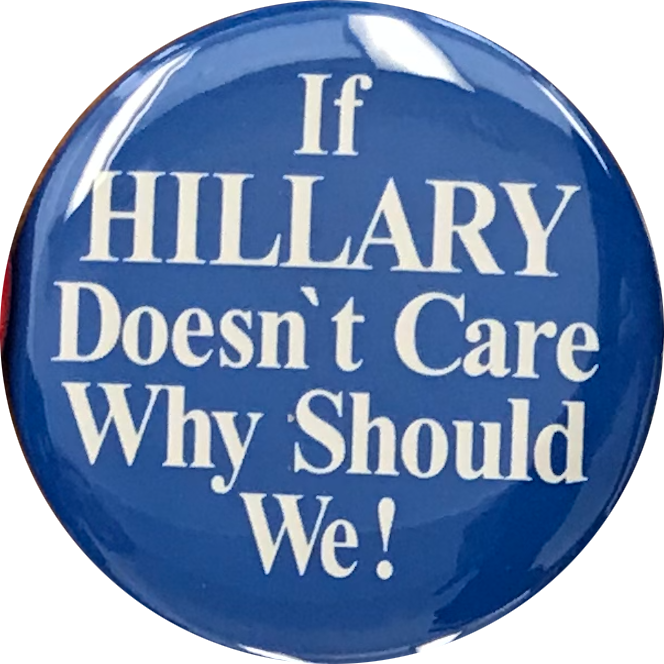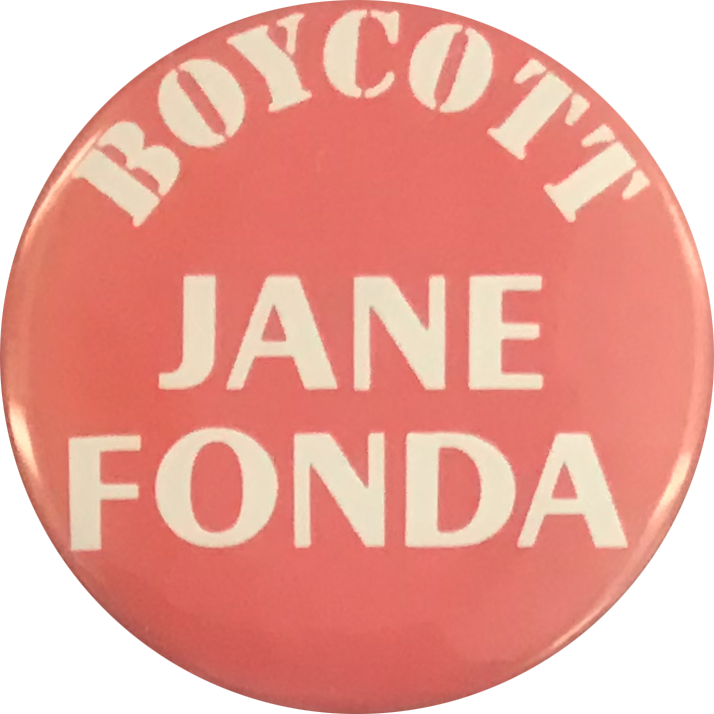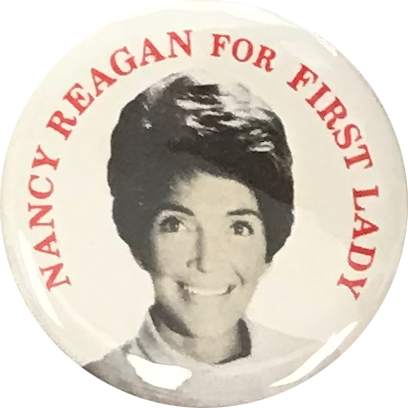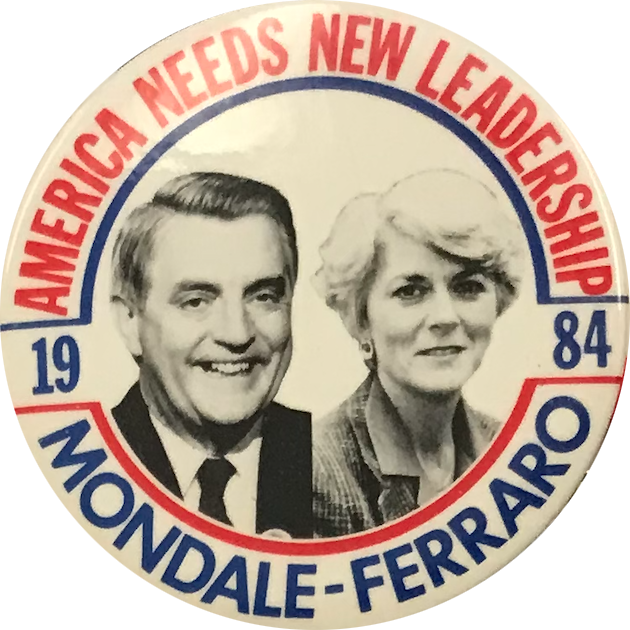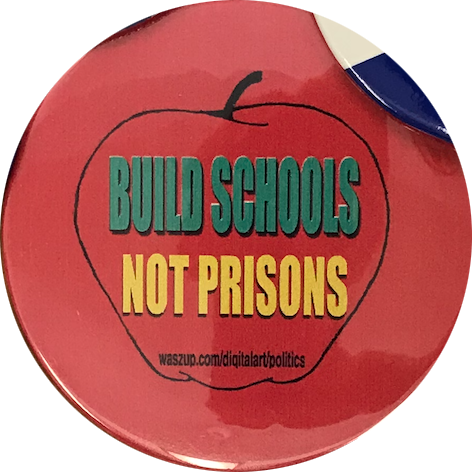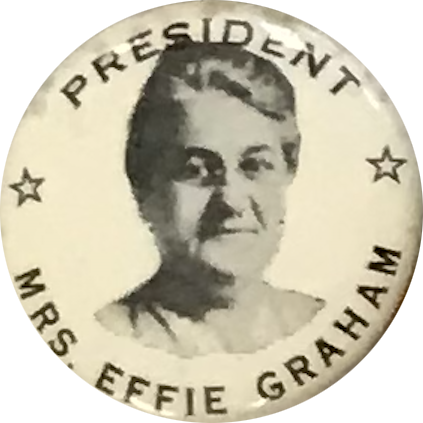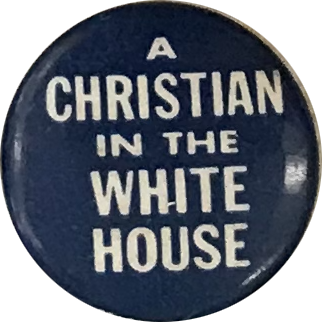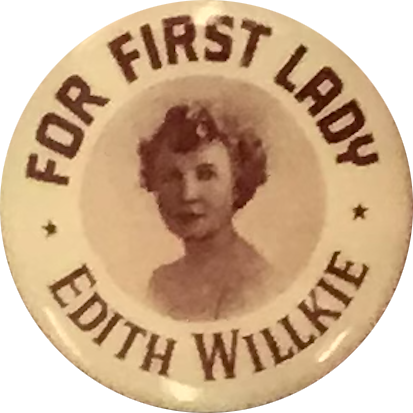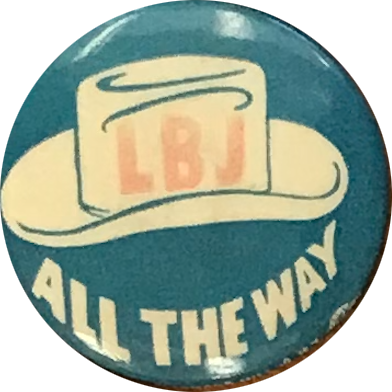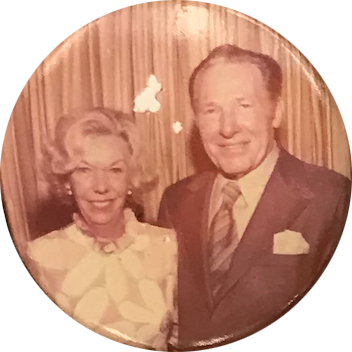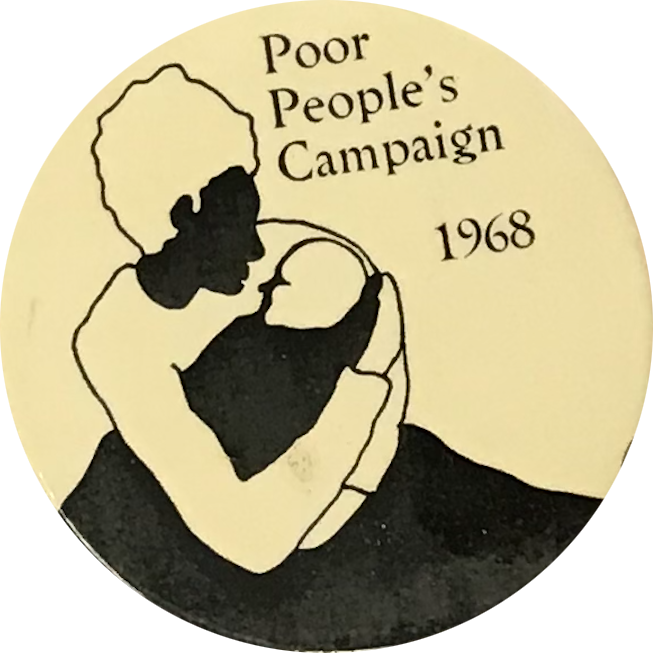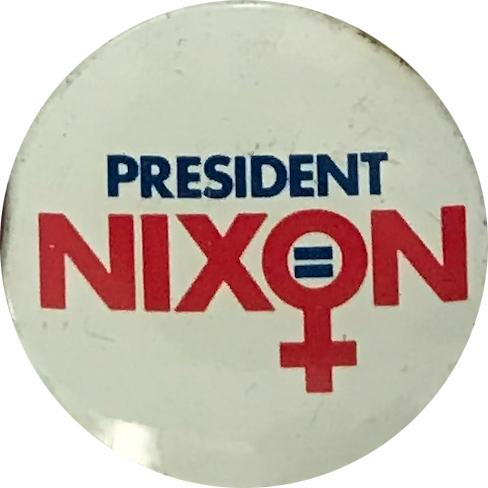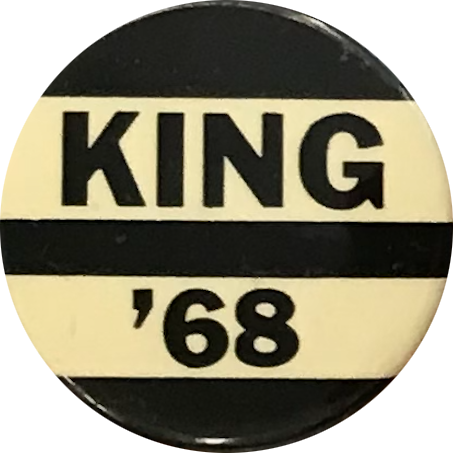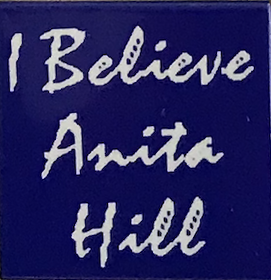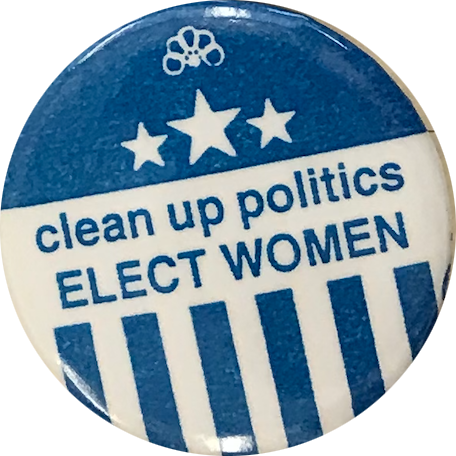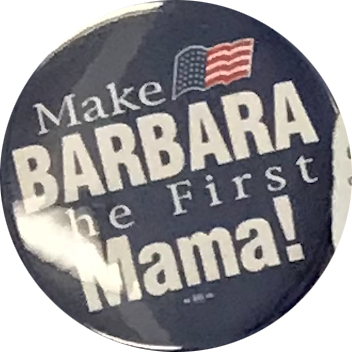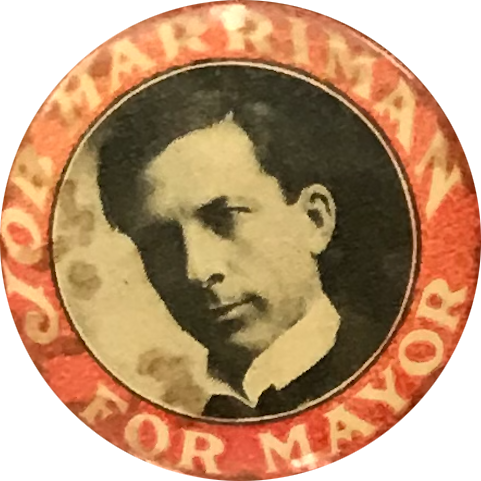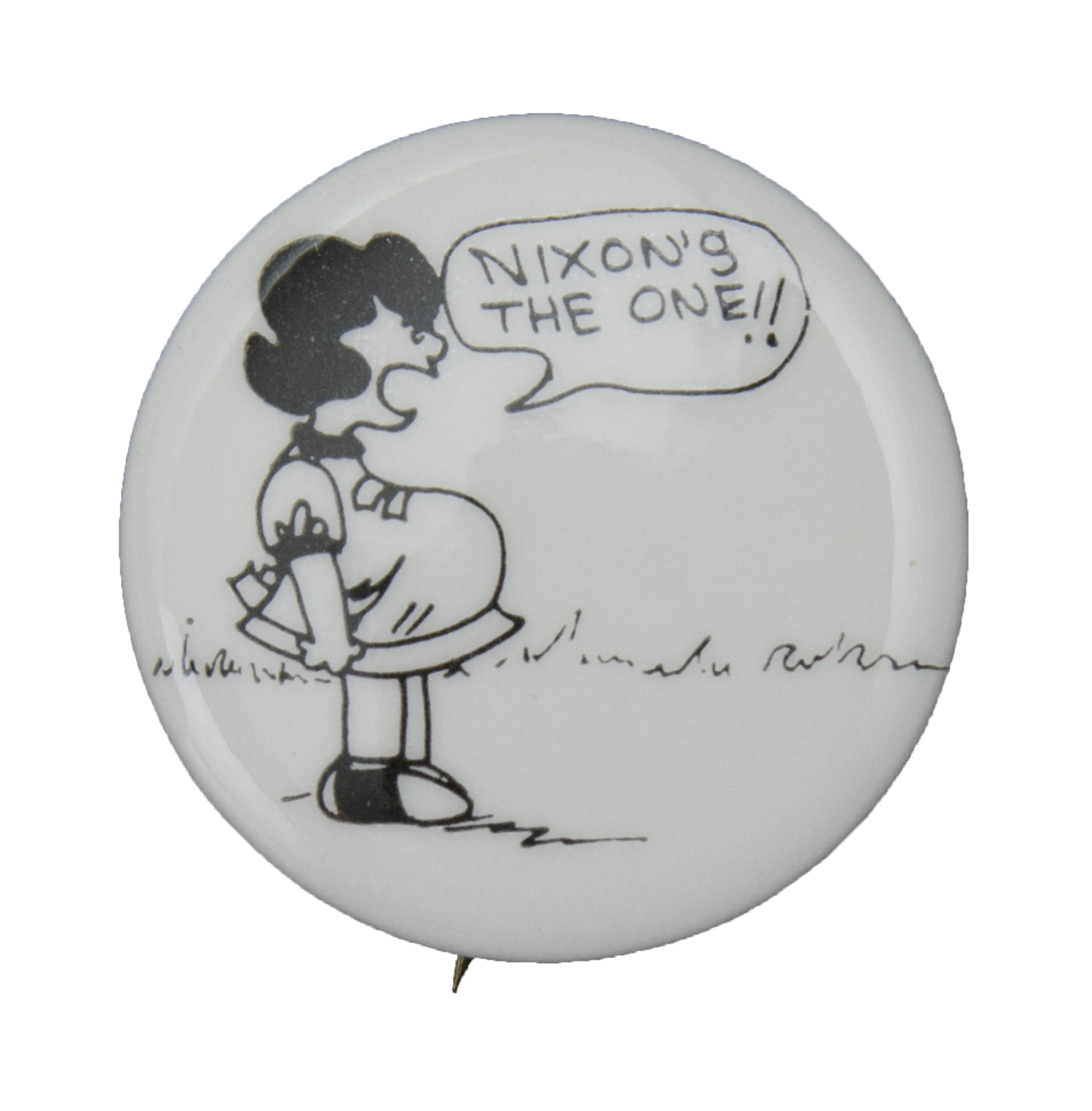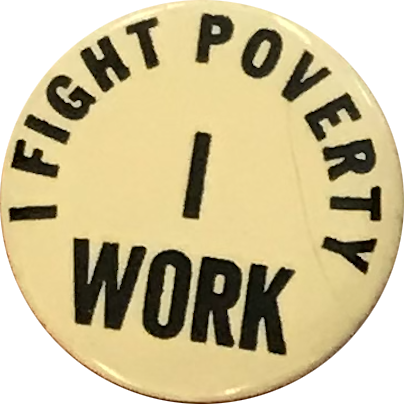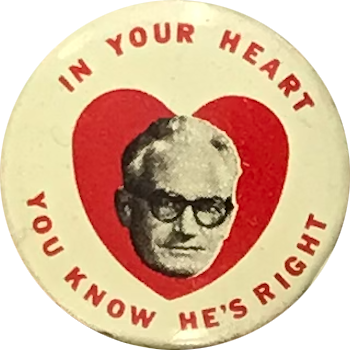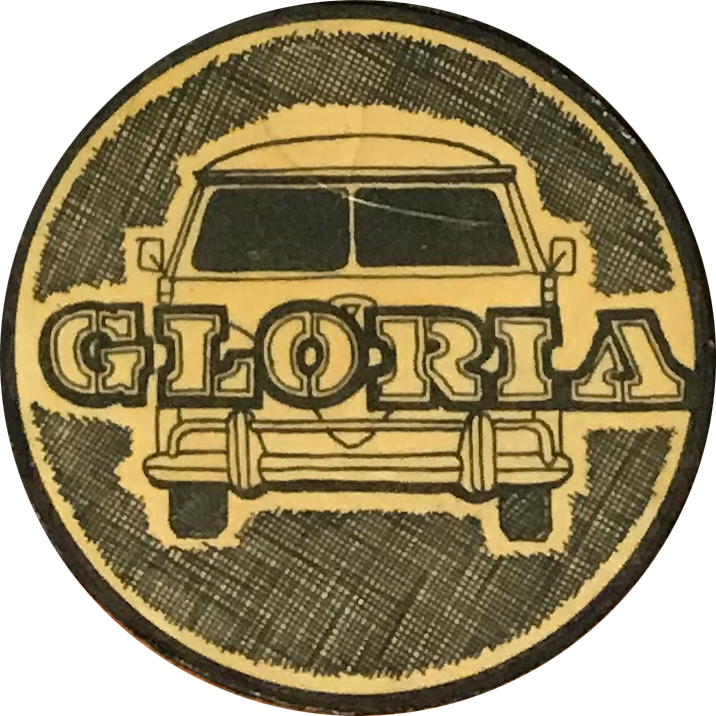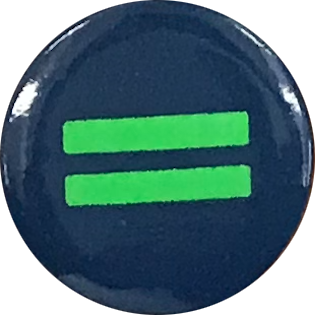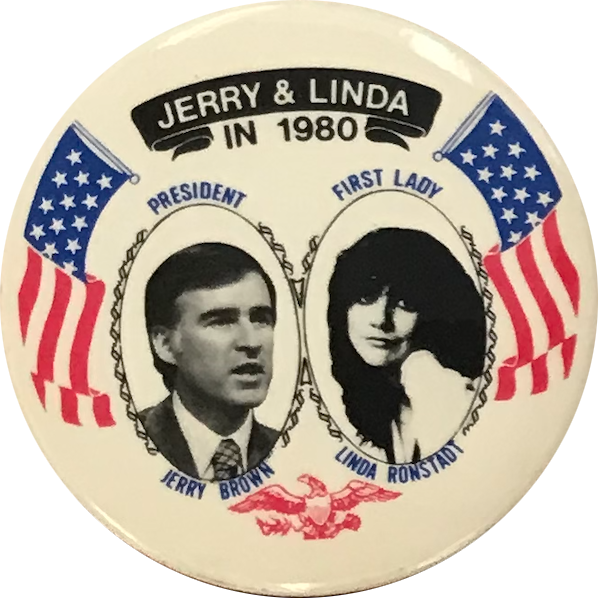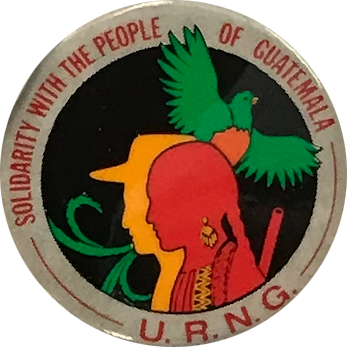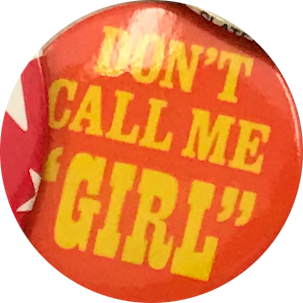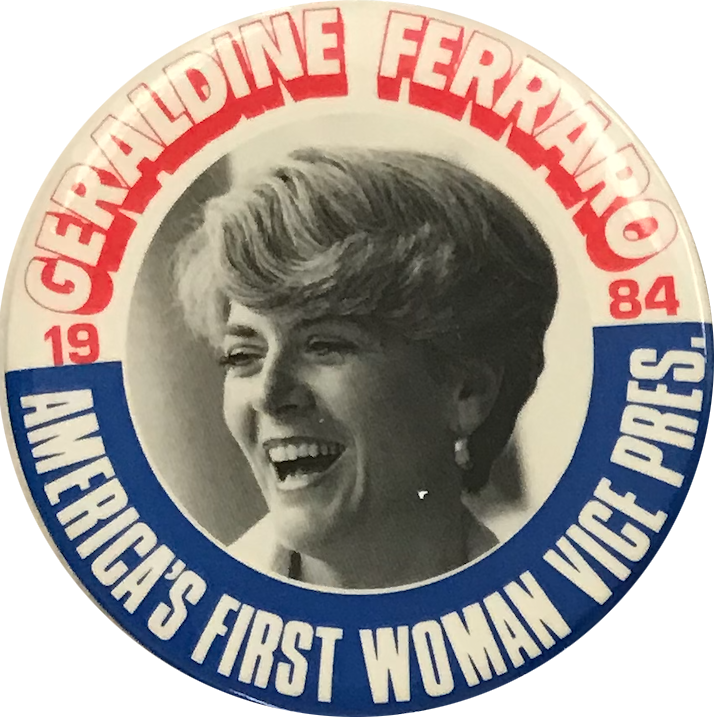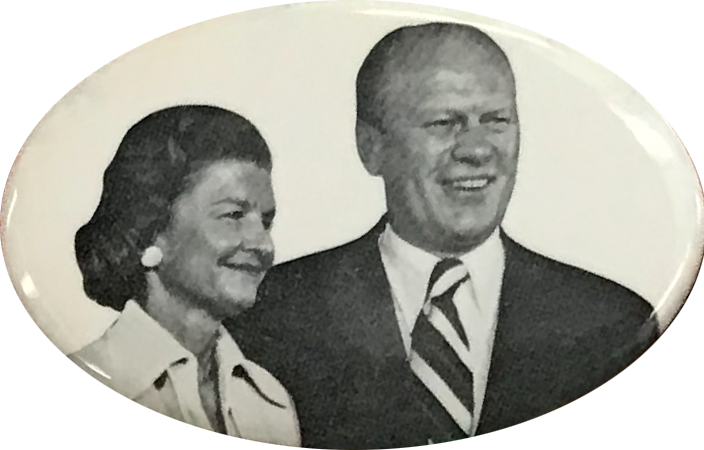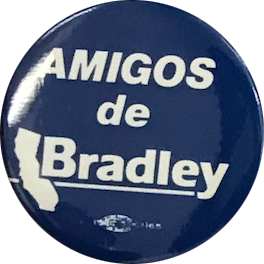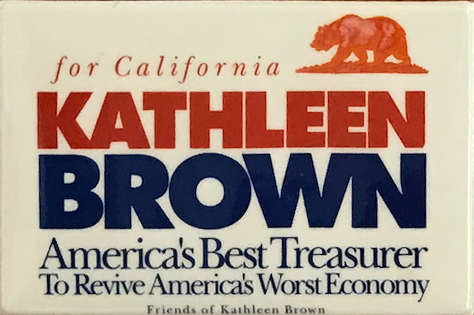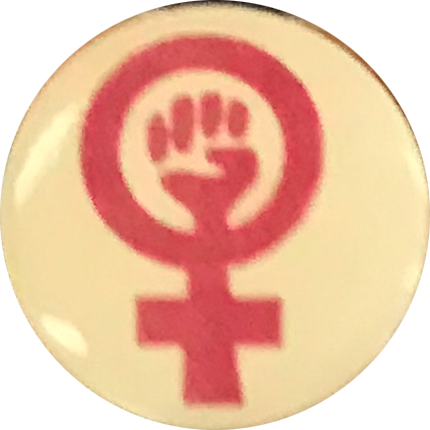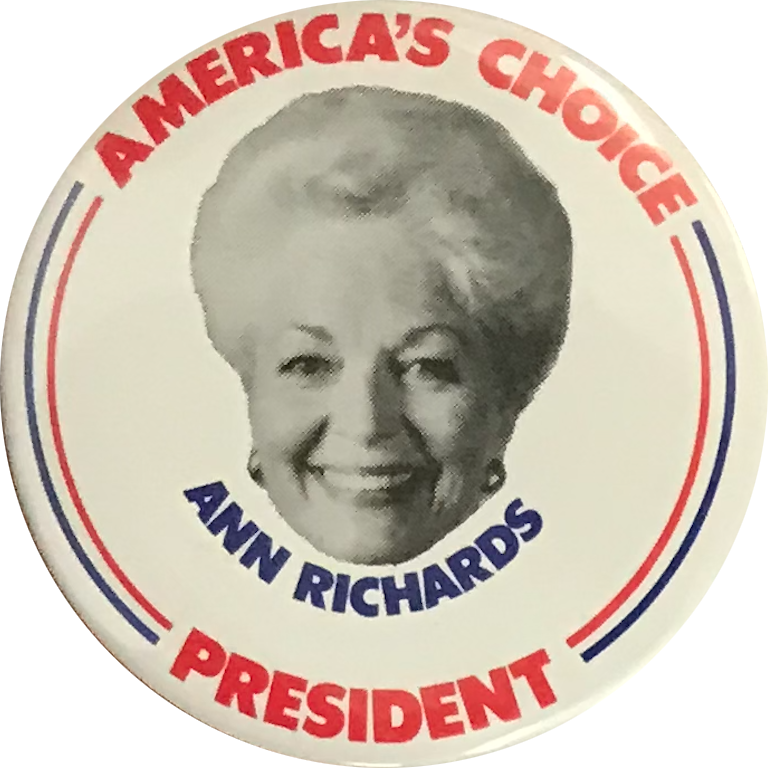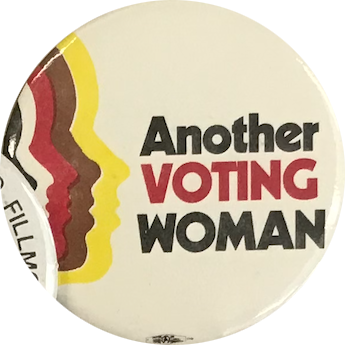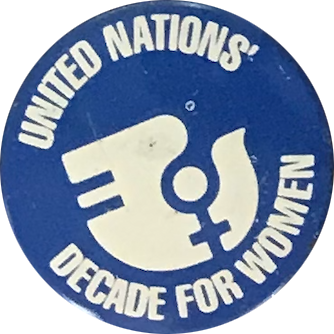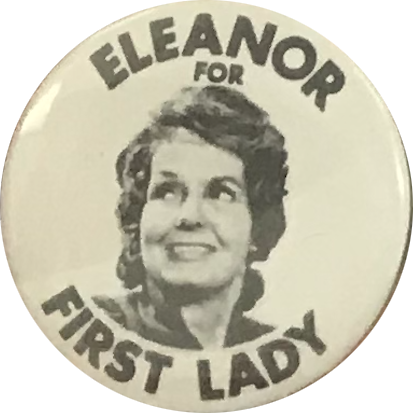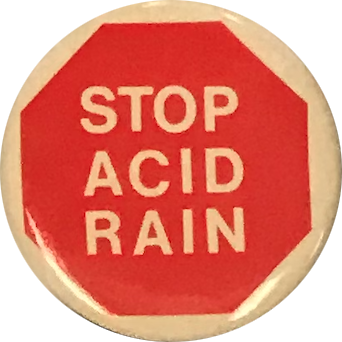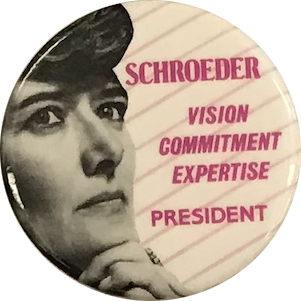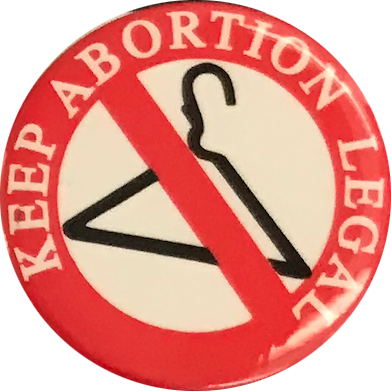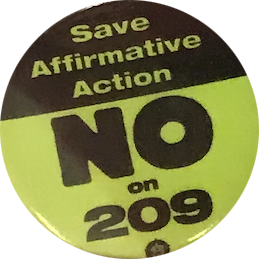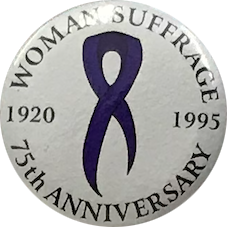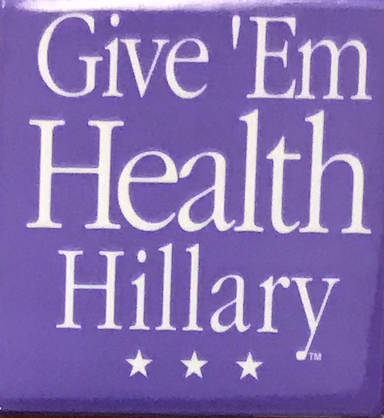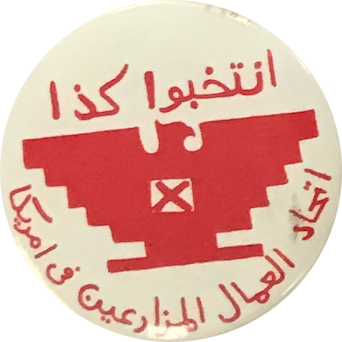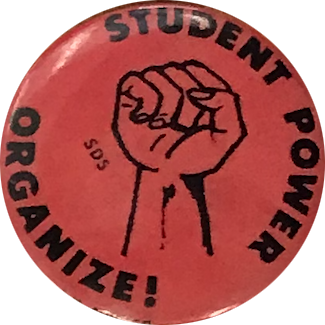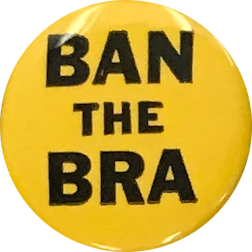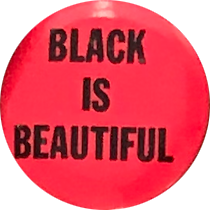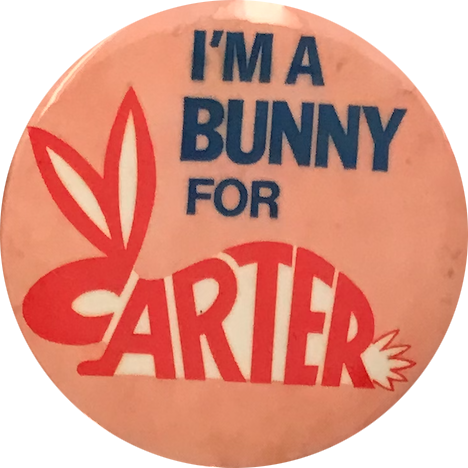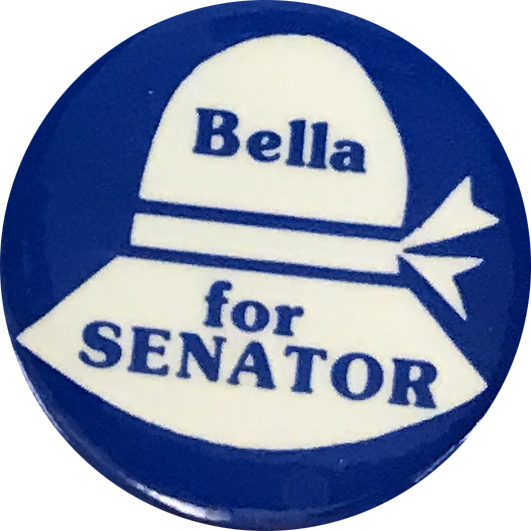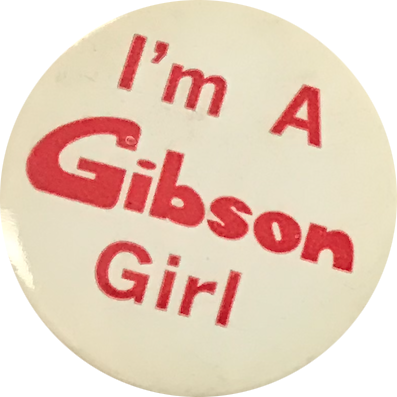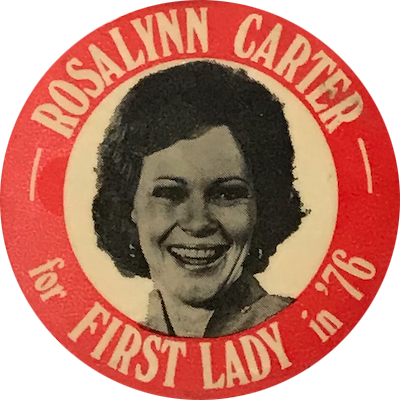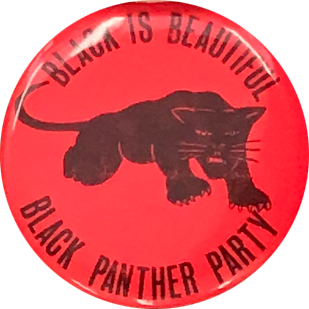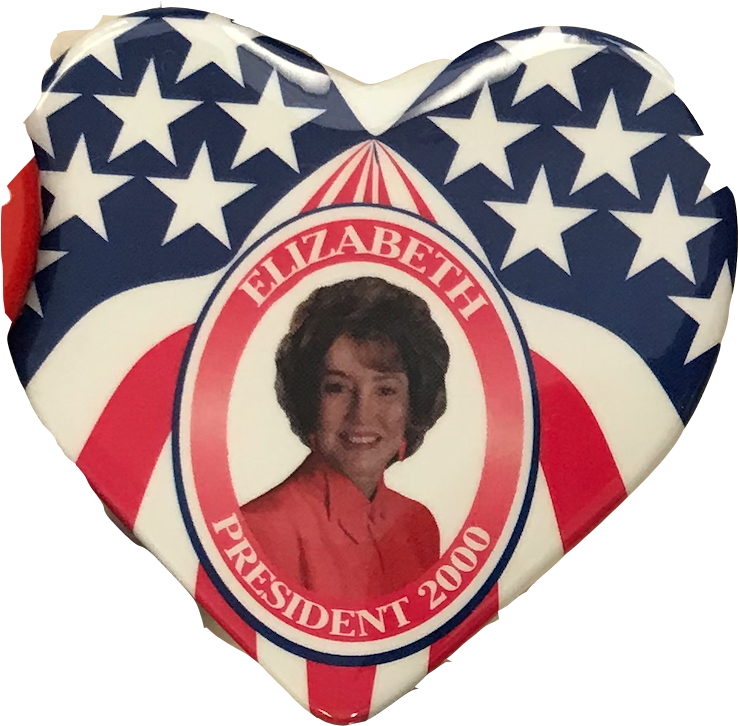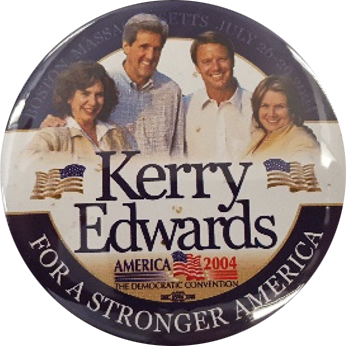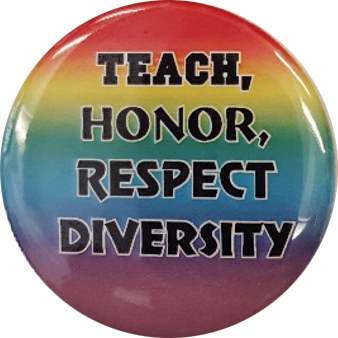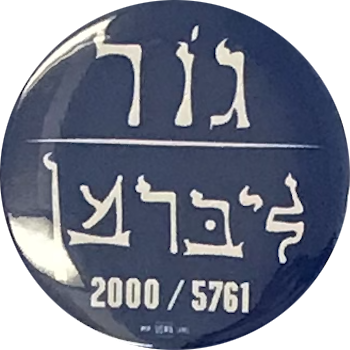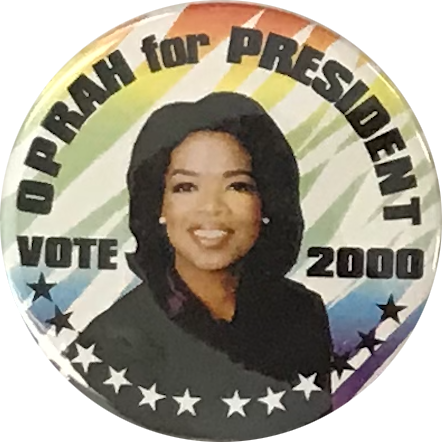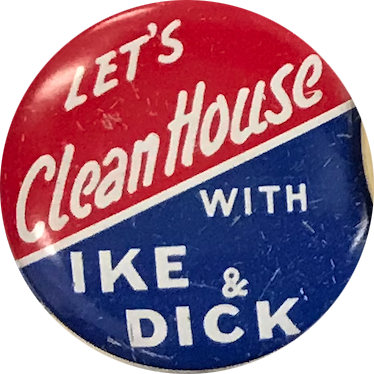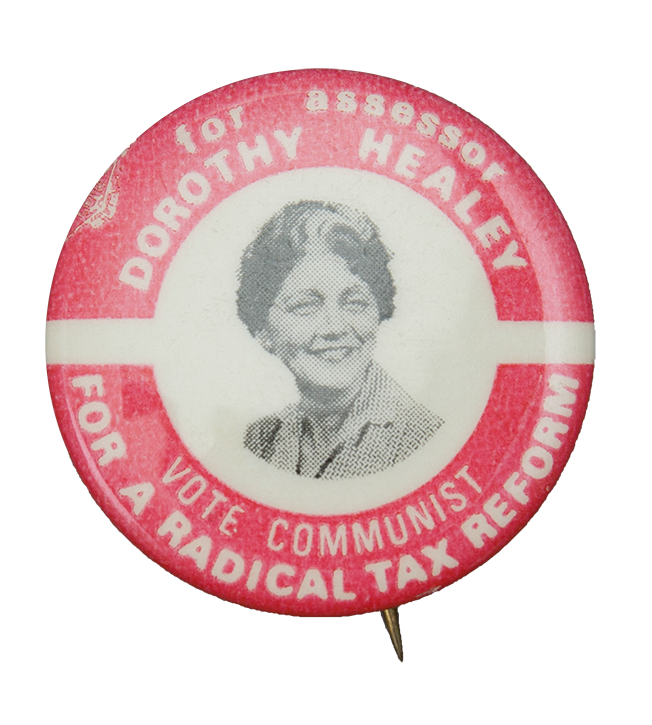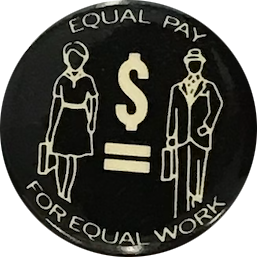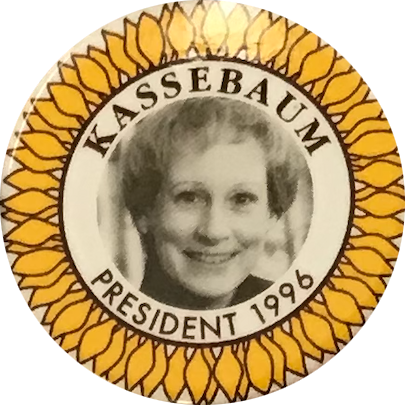Rise Up L.A.: Buttons from the Exhibition
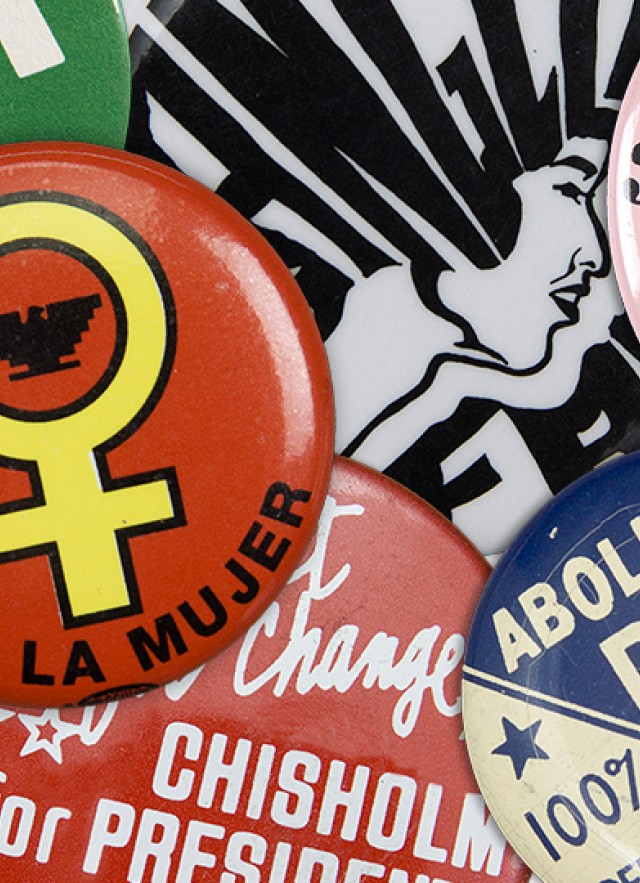
Many people feared that if women could vote, they would vote together as a bloc, and so have more influence over elections. This fear proved untrue, because women have supported each of the wildly different causes and candidates these buttons represent.
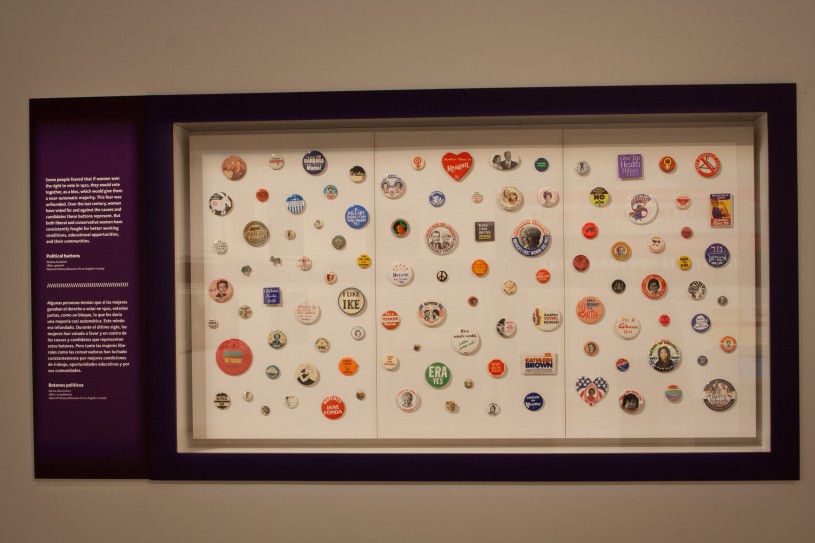
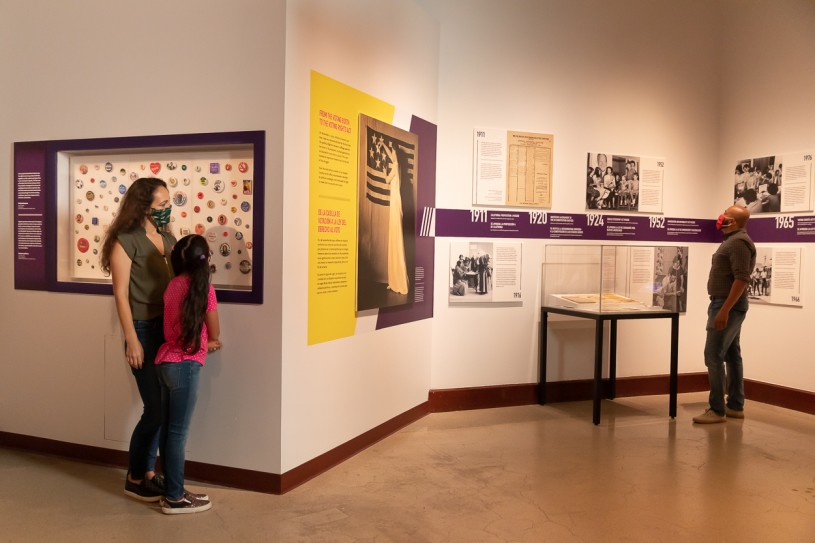
Left Panel
Hillary and Bill Clinton
Slogan supports the Clintons during impeachment. (1998–1999)
Kiss me! I'm a Democrat
"Kiss me" political buttons have been around since at least the 1970s. (Date unknown)
Kennedy Students
During the 1968 presidential election, Students for (Bobby) Kennedy groups formed at colleges across the nation. (1968)
Boycott Jane Fonda
Actress Jane Fonda became one of the most controversial anti-war activists during the Vietnam War. (1960s–70s)
Nancy Reagan
When campaigning in 1980, Nancy Reagan's main cause was the “Just Say No” anti-drug campaign. (1970s–80s)
Mondale-Ferraro
Geraldine Ferraro ran alongside Walter Mondale, becoming the first female on a major party ticket to run for the vice presidency. (1984)
Build Schools Not Prisons
Protesting cuts to education—23 prisons and one university have opened in California since 1980. (2000)
Mrs. Effie Graham
Graham was a suffragist and president of the Kansas Council of Women. (1900s)
Woman's Land Army
The Land Army mobilized women as farm workers while men were away at war. (1918)
A Christian in the White House
Herbert Hoover—the Christian referred to in the slogan—ran for president against Al Smith, a Catholic. (1928)
Edith Willkie for First Lady
Edith was the wife of Wendell Willkie, a Republican presidential nominee. (1940)
LBJ All the Way
This slogan was used in President Lyndon B. Johnson's (LBJ) reelection campaign. (1964)
Presidential campaigns tried to appeal to housewives by selling the image of the First Lady. In the 1960 election, Pat Nixon and Jackie Kennedy competed as much as their husbands, with Nixon's ad campaign featuring the slogan "Pat For First Lady."
Sam and Betty Yorty
Mr. Yorty wass the former mayor of Los Angeles (1970s)
President Nixon
The equal sign inside the female symbol means a vote for Nixon is a vote for equal rights for women. (1960s–70s)
Clean Up Politics, Elect Women
Slogan featured on buttons at the National Women’s Political Caucus at the 2000 Democratic Convention. (2000s)
Make Barbara the First Mama
Barbara Bush was first lady to President George H. W. Bush and "first mama" to her son, the 43rd president, George W. Bush (c. 2000)
Job Harriman for Mayor
In 1911, women in Los Angeles voted for the first time in a mayoral election between socialist Job Harriman and conservative George Alexander (c. 1911)
Nixon's the One
This button pokes fun at Richard Nixon. One of his supporters was photographed at a GOP convention standing beneath a "Nixon's the One" banner; a visual pun implying that Nixon was the father. (c. 1968)
I Fight Poverty, I Work
This slogan showed opposition to government welfare programs (c. 1960s)
In Your Heart You Know He's Right
This button features Republican presidential candidate Barry Goldwater (c. 1964)
Gloria Steinem
In the 1960s, Steinem helped launch the women's liberation movement (c. 1966)
Tom Bradley
The first African American mayor of Los Angeles (c. 1970s–1980s)
Center Panel
ERA Yes
The Equal Rights Amendment was first introduced in 1923 and nearly a century later has still not become law. (1970s–80s)
Black Lives Matter (BLM)
This L.A.-based group has helped lead a nationwide movement to "eradicate white supremacy and build local power to intervene in violence inflicted on Black communities." (2020)
Equality
The equals sign is often used to call for equal rights for women and/or members of the LGBTQ community (1990s–2000s)
Jerry & Linda
This button pokes fun at presidential hopeful Jerry Brown (then Governor of California) for dating singer Linda Ronstadt. (1980)
Unidad Revolucionaria Nacional Guatemalteca (URNG)
URNG is a political party that started as a guerrilla movement. In 1982, the Guatemalan military violently suppressed and killed members of the group. (1984)
Don't Call Me Girl
This feminist slogan was popularized by The Women's Graphics Collective. (1970s–80s)
Geraldine Ferraro
After Ferraro, it took 24 years for another woman to be nominated to a major party presidential ticket. (1984)
Betty and Gerald Ford
Betty Ford became a popular first lady whose legacy has often outshined her husband's. (1970s)
Amigos de Bradley
Button supporting the first African American mayor of Los Angeles, Tom Bradley (1970s–80s)
Kathleen Brown
Attorney and politician Kathleen Brown campaigned to be governor of California, an office previously held by her father and brother. (1994)
Republican Women for Reagan
Reagan unsuccessfully ran against President Gerald Ford to become the Republican Party's candidate. (1976)
Woman's Symbol
For many, the female symbol is also a symbol of female empowerment. (1960s–1970s)
I'm a Younger Woman
Evelle J. Younger ran for governor of California as the Republican candidate; he lost to Democratic incumbent, Jerry Brown. (1978)
Ann Richards for President
Governor of Texas Ann Richards was such a popular figure that people called upon her to run for President. (1990s)
Voting Woman (Rainbow Coalition)
Silhouettes represent the "rainbow coalition" of people who supported Jesse Jackson's presidential bid. (1988)
United Nations (UN) Decade for Women
The UN declared the Decade for Women to focus on issues that impact women worldwide. (1975–85)
Eleanor for First Lady
Eleanor McGovern, wife of Democratic Party presidential nominee George McGovern. (1972)
Stop Acid Rain
Stopping acid rain became a popular cause after scientists learned that pollutants can combine with atmospheric water to create harmful, acidic rainfall. (1980s)
Schroeder for President
Congresswoman Pat Schroeder briefly sought the Democratic presidential nomination. (1987)
Right Panel
Keep Abortion Legal
Before abortions were legal, women sometimes self induced using potentially dangerous means (including coathangers). Coathangers became symbols of a patient's suffering when abortion is out of reach. (1960s–1970s)
Save Affirmative Action
California Proposition 209 passed, eliminating many of the state's affirmative action protections. (1996)
Woman Suffrage 75th Anniversary
This button was created to mark the 75th anniversary of the passage of the 19th Amendment. (1995)
Give 'Em Health Hillary
As first lady, Hillary Clinton chaired the Task Force on National Health Care Reform. (1990s)
"Yes, it can be done"
This slogan, written in Arabic, shows support for the United Farm Workers, symbolized by the Aztec eagle. (1960s)
Student Power Organize
This button was likely worn by students involved in the Anti-Vietnam War Movement. (1965–75)
Ban the Bra
In the 1960s, the bra became a symbol of female oppression, and "Ban the Bra" became a popular feminist rallying cry. (1960s)
Black is Beautiful
This movement called for an appreciation of black history, which also inspired contemporary cultural pride. (1960s)
I'm a Bunny for Carter
In 1976, presidential hopeful Jimmy Carter took part in a controversial interview for Playboy Magazine. (1970s)
Bella for Senator
Congresswoman Bella Abzug was a leading voice for women’s rights, and was also known for wearing stylish hats. (1970s)
I'm a Gibson Girl
This button probably refers to the campaign of John Gibson for L.A. City Council. (mid-20th century)
Rosalynn Carter
Carter worked alongside her husband, Jimmy Carter, in the 1976 presidential election, and ultimately spent 14 solid months on the campaign trail. (1976)
Black Panther Party
The Black Panther Party for Self-Defense (BPP) was founded in 1966 by Bobby Seale and Huey P. Newton. (1960s)
Women for Dole
Bob Dole, the Senate Majority Leader in 1996, ran against incumbent President Bill Clinton and lost. (1996)
Kerry/Edwards
Highlighting how important spouses and families are to any campaign, this button features vice presidential candidates John Kerry and John Edwards with their wives, Teresa and Elizabeth. (2004)
Teach, Honor, Respect, Diversity
This slogan is set against a rainbow, which has been a symbol of diversity and the LGBTQ+ community since the 1970s
Stop the War Against Iraq
The button was likely worn in a peace march protesting the US war in Iraq. (2003)
Hebrew Slogan
This button is from the 2000 presidential election, or the year 5761 according to the Jewish calendar, between George W. Bush and Al Gore (c. 2000)
Oprah for President
Despite calls from her fans over the years, Oprah Winfrey has repeatedly said she will not run for president (c. 2000)
Let's Clean House
In 1952, Dwight D. Eisenhower (Ike) ran in the presidential election as the Republican candidate with Richard Nixon (Dick) as running mate (c. 1952)
Dorothy Healey
Healey was chairwoman of the Southern California Communist Party from the 1940s through the 1960s
Equal Pay for Equal Work
Despite the Equal Pay Act becoming law in 1963, women and men still do not receive equal pay. (1970s)
Support Farm Workers
Three figures stand in front of the Aztec eagle, the symbol of the United Farm Workers. (1960s)
Kassebaum for President
Senator Nancy Kassebaum of Kansas never ran for president, but in 1936 her father ran against Roosevelt (c. 1996)
